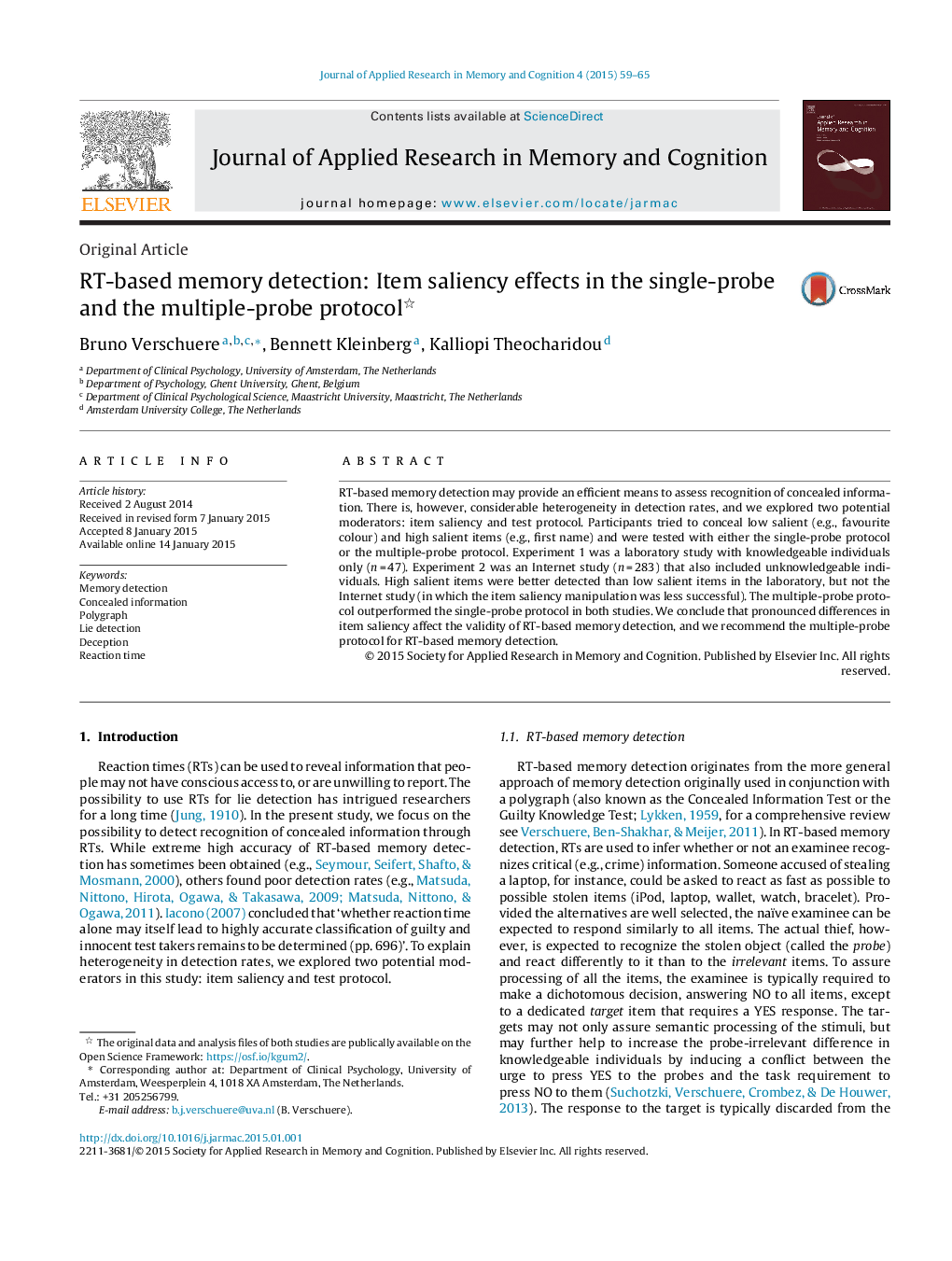| Article ID | Journal | Published Year | Pages | File Type |
|---|---|---|---|---|
| 881602 | Journal of Applied Research in Memory and Cognition | 2015 | 7 Pages |
•The multiple-probe protocol outperforms the single-probe protocol for RT-based memory detection.•High salient items may be more easily detected than low salient items (Experiment 1).•An independent assessment of item saliency can help to elucidate the impact of item saliency on memory detection.•RT-based memory detection can be have high diagnostic validity in both offline and online research.
RT-based memory detection may provide an efficient means to assess recognition of concealed information. There is, however, considerable heterogeneity in detection rates, and we explored two potential moderators: item saliency and test protocol. Participants tried to conceal low salient (e.g., favourite colour) and high salient items (e.g., first name) and were tested with either the single-probe protocol or the multiple-probe protocol. Experiment 1 was a laboratory study with knowledgeable individuals only (n = 47). Experiment 2 was an Internet study (n = 283) that also included unknowledgeable individuals. High salient items were better detected than low salient items in the laboratory, but not the Internet study (in which the item saliency manipulation was less successful). The multiple-probe protocol outperformed the single-probe protocol in both studies. We conclude that pronounced differences in item saliency affect the validity of RT-based memory detection, and we recommend the multiple-probe protocol for RT-based memory detection.
